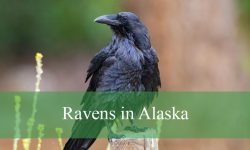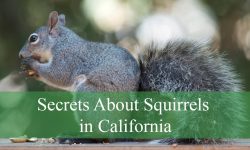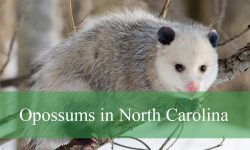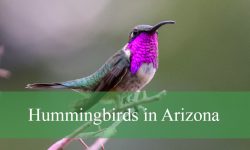Virginia’s diverse landscapes, from forests and farmlands to suburban neighborhoods, provide ideal habitats for a wide range of insects and arachnids. While many are harmless or even beneficial, some can cause painful stings, bites, or allergic reactions.
Among these, ticks and mosquitoes are notorious for spreading diseases, while spiders such as the Black Widow and Brown Recluse carry venom that requires caution. Other pests, like cockroaches and stink bugs, may not pose direct medical threats but are major nuisances in homes and gardens.
This guide highlights 24 of the most dangerous or harmful bugs in Virginia, offering identification details, behaviors, and the risks they present. Understanding these species helps residents and outdoor enthusiasts stay safe while appreciating the state’s rich biodiversity.
Types of Dangerous or Harmful Bugs Found in Virginia
Blacklegged Tick (Ixodes scapularis)
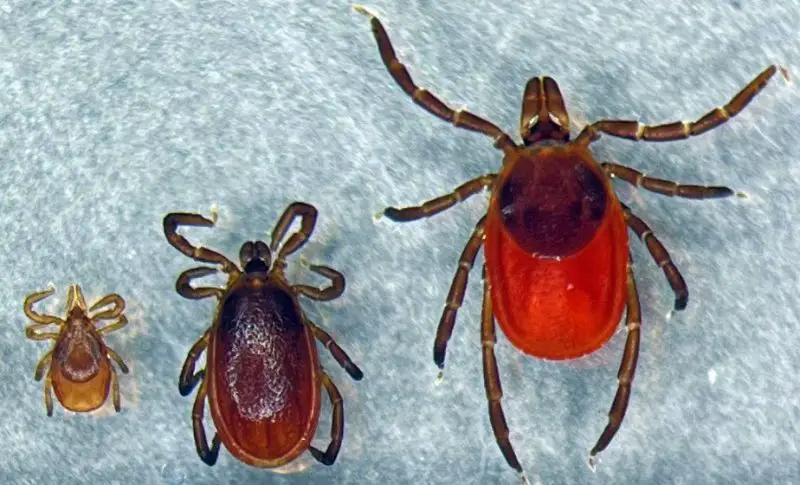
The Blacklegged Tick, also known as the deer tick, is a small arachnid that plays a significant role in spreading tick-borne diseases in Virginia. Adults are dark reddish-brown with a distinct black dorsal shield, and females are slightly larger than males. Their size ranges from 2 to 3 millimeters when unfed but can swell significantly after feeding.
Identification of this tick is often based on its reddish body and black legs, distinguishing it from other common ticks. Nymphs are especially dangerous because they are about the size of a poppy seed, making them hard to detect. Both nymphs and adults feed on mammals, birds, and humans.
This species is most active during late spring and summer when nymphs seek hosts, and again in fall when adults emerge. Blacklegged Ticks prefer wooded, grassy, and shrubby habitats with high humidity. They often wait at the tips of vegetation to attach to passing hosts.
The danger lies in their role as vectors. They can transmit Lyme disease, anaplasmosis, babesiosis, and Powassan virus through their bite. Infections often occur because ticks may remain attached for more than 24 hours without being noticed. Prompt removal reduces the risk of disease.
Lone Star Tick (Amblyomma americanum)
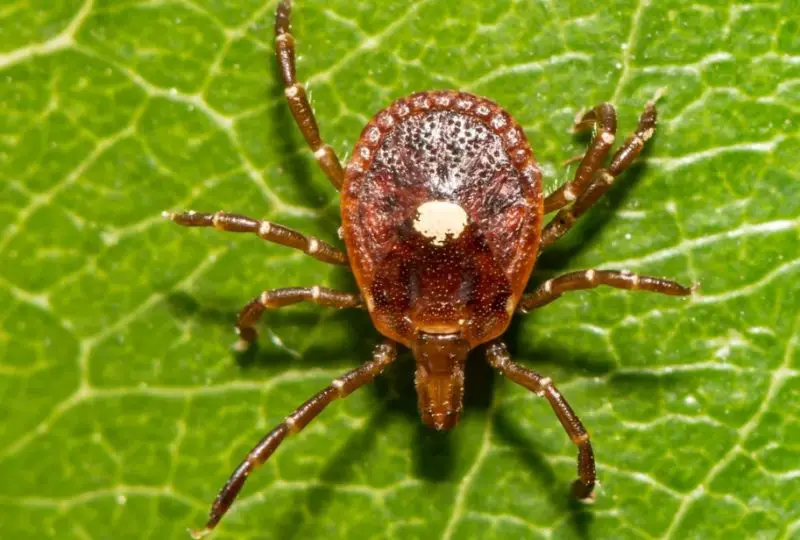
The Lone Star Tick is larger than the Blacklegged Tick and is easily recognized by the distinctive white or silver dot on the female’s back, giving it the “lone star” name. Adults measure 3 to 4 millimeters when unfed but expand after a blood meal. Males lack the bright spot but still feature mottled brown bodies.
These ticks are aggressive feeders and will actively seek hosts rather than waiting passively. They attack a variety of animals, including deer, livestock, pets, and humans. Their bites are more painful and irritating than those of many other tick species, often leaving noticeable welts.
The Lone Star Tick thrives in wooded areas with dense underbrush, meadows, and transitional zones where wildlife activity is high. They are especially common in the southeastern United States, including Virginia. Activity peaks in late spring and summer.
This species is medically significant because it can transmit ehrlichiosis, tularemia, and Heartland virus. In addition, it is associated with alpha-gal syndrome, an unusual allergic reaction to red meat triggered by a sugar molecule introduced during bites. This unique health risk makes them one of the most concerning ticks in the region.
Asian Tiger Mosquito (Aedes albopictus)
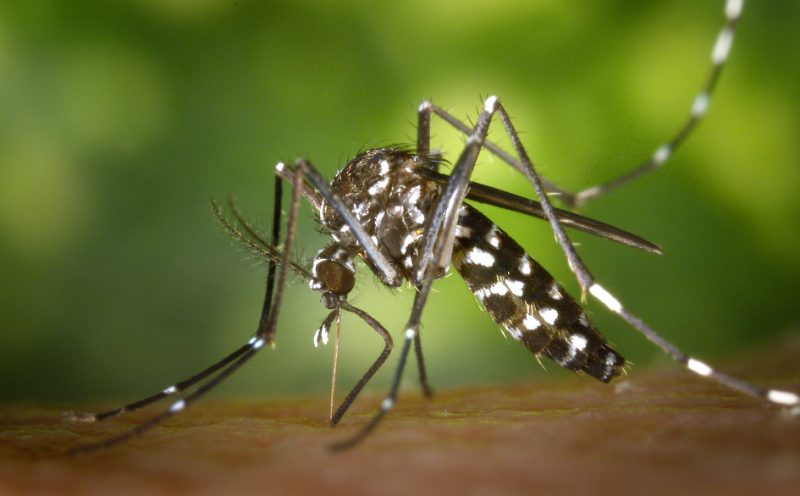
The Asian Tiger Mosquito is an invasive species originally from Asia, now established across Virginia. It is striking in appearance, with black-and-white striped legs and a distinct white line running down the center of its thorax. Adults measure about 2 to 10 millimeters in length, slightly smaller than the common house mosquito.
This mosquito is most active during the daytime, especially in early morning and late afternoon. Unlike other species that prefer dusk and dawn, the Asian Tiger Mosquito aggressively seeks human hosts when people are outdoors. Its bite is painful and often followed by itching and swelling.
Habitat preference includes urban and suburban areas, where stagnant water in containers, gutters, and bird baths provides ideal breeding sites. It does not require large bodies of water, making it a common backyard pest. Eggs are resistant to drying out and can survive winter conditions, aiding its spread.
From a health perspective, this mosquito is a known vector of serious viruses including chikungunya, dengue, Zika, yellow fever, and West Nile virus. While not every mosquito carries disease, its aggressive feeding behavior and adaptability make it one of the most concerning mosquitoes in Virginia.
Northern House Mosquito (Culex pipiens)
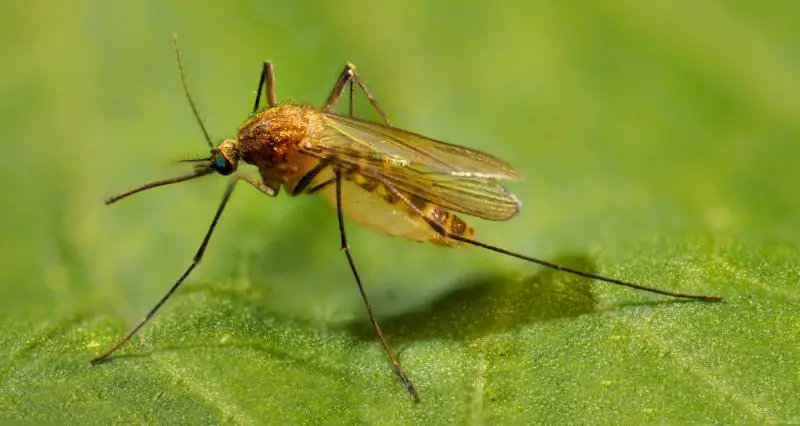
The Northern House Mosquito is a small, brownish insect with pale bands on its abdomen and unmarked wings. Adults measure 4 to 10 millimeters in length, with long legs and a narrow body. It lacks the distinctive striping seen in species like the Asian Tiger Mosquito, making identification more subtle.
This mosquito is primarily active at night, particularly around dusk and dawn. It is attracted to humans, birds, and mammals, using carbon dioxide and body heat to locate hosts. Its bite is usually less painful than that of the Asian Tiger Mosquito, but it can still cause swelling and itching.
The species thrives in urban and suburban environments, especially near stagnant or polluted water. It often breeds in storm drains, clogged gutters, and containers, making it common around homes. Its adaptability allows it to persist even in cooler northern regions.
Northern House Mosquitoes are notable for transmitting West Nile virus and St. Louis encephalitis, diseases that affect both humans and birds. They play a major role in urban mosquito-borne disease cycles, particularly during summer outbreaks in Virginia.
Black Widow Spider (Latrodectus mactans)
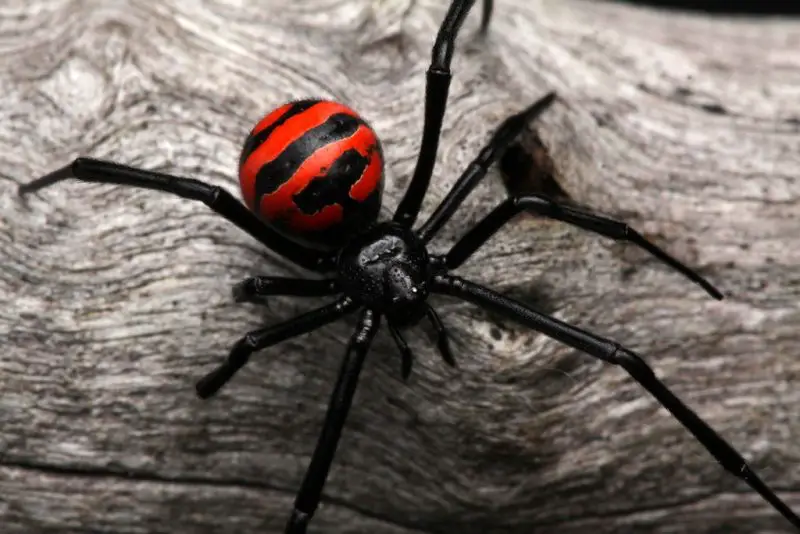
The Black Widow Spider is one of the most recognizable and feared arachnids in Virginia. Females are shiny black with a distinct red hourglass marking on the underside of the abdomen, though the shape and color may vary. Adults measure about 8 to 13 millimeters in body length, with long, slender legs. Males are smaller and less venomous.
These spiders are not aggressive by nature but will bite when threatened or accidentally disturbed. Their bites are rarely fatal but can cause significant pain and systemic reactions, including muscle cramps, sweating, nausea, and hypertension. Medical treatment is often necessary, especially for children and the elderly.
Black Widows prefer sheltered, dark environments such as woodpiles, garages, sheds, and under rocks. They construct irregular, tangled webs close to the ground, which serve as both hunting grounds and protective shelters. They feed primarily on insects and other arthropods, immobilizing prey with potent venom.
The venom of the Black Widow contains a neurotoxin called latrotoxin, which interferes with nerve transmission. Though fatalities are extremely rare in the U.S. due to modern medical care, the severity of symptoms makes them one of the most medically important spiders in Virginia.
Brown Recluse Spider (Loxosceles reclusa)
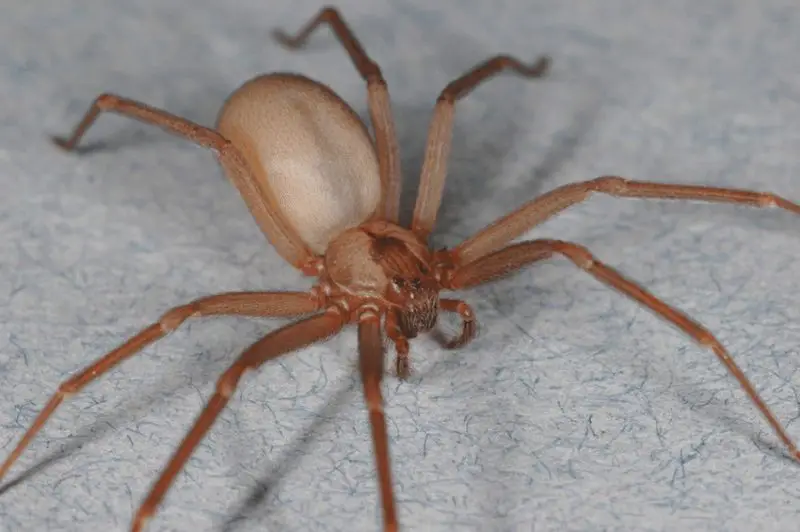
The Brown Recluse Spider is a small, light to dark brown arachnid, identifiable by the violin-shaped marking on its cephalothorax. Adults typically measure between 6 and 20 millimeters in body length, with long, fine legs. Unlike many spiders, they have only six eyes arranged in pairs rather than the typical eight.
This species is reclusive and prefers to avoid human contact. It hides in dark, undisturbed areas such as attics, closets, basements, and storage boxes. Outdoors, it shelters under bark, rocks, and woodpiles. Its web is irregular and used mainly as a retreat rather than for trapping prey.
Brown Recluse bites often go unnoticed at first, as they are usually painless. However, within hours to days, the bite may become red, swollen, and develop into an ulcerating wound with necrosis. Systemic symptoms like fever, chills, and nausea may occur in severe cases, though most bites heal with minimal medical intervention.
The venom contains enzymes that destroy skin and soft tissue, sometimes requiring surgical treatment. While fatalities are extremely rare, the potential for tissue damage makes this species one of the most medically important spiders in Virginia.
Kissing Bug (Triatoma sanguisuga)
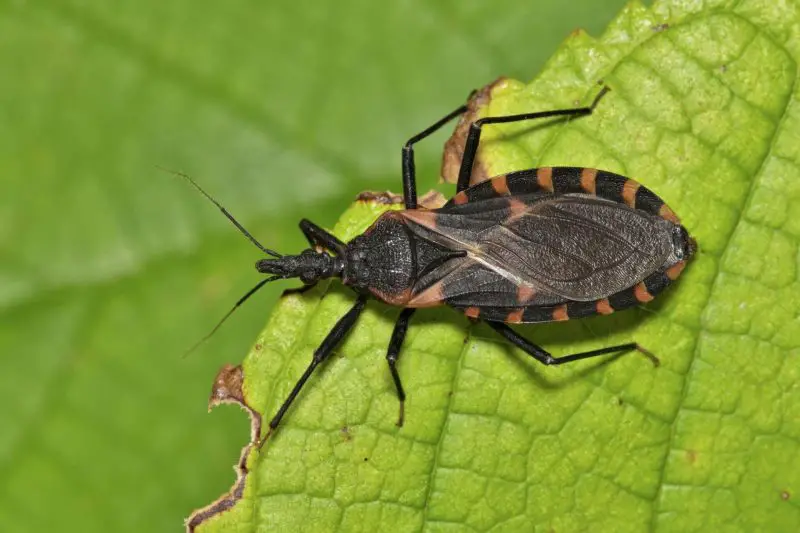
The Kissing Bug, also called the Bloodsucking Conenose, is a large, nocturnal insect that feeds on the blood of mammals, including humans. Adults are 17 to 27 millimeters long, with elongated bodies, cone-shaped heads, and orange markings along the edge of their wings. Their dark brown to black coloration makes them well camouflaged at night.
They are most active after dusk, attracted to lights and carbon dioxide released by sleeping animals or people. True to their name, they often bite near the mouth or eyes while the host is sleeping. Their bites are often painless, though some individuals develop allergic reactions ranging from itching to anaphylaxis.
Habitat preferences include woodpiles, rodent nests, chicken coops, barns, and occasionally cracks in homes. They are associated with rural and semi-rural areas where wildlife reservoirs of parasites are present. In Virginia, sightings are rare but possible in the warmer months.
The primary health concern is their potential to transmit Trypanosoma cruzi, the parasite responsible for Chagas disease. Transmission occurs when infected bugs defecate near a bite, and the parasite enters through broken skin or mucous membranes. While Chagas disease is more common in Central and South America, the presence of these insects makes awareness important in Virginia.
Imported Fire Ant (Solenopsis invicta)
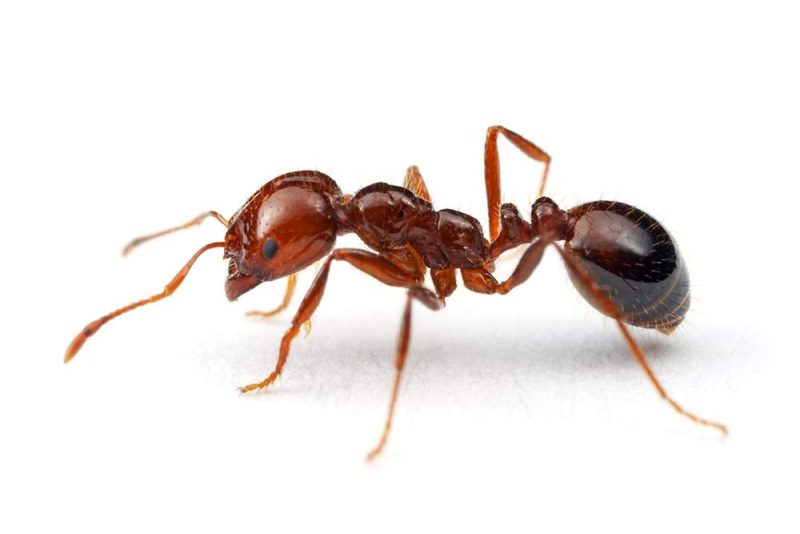
The Imported Fire Ant is a small, reddish-brown ant measuring about 2 to 6 millimeters in length. Colonies often contain thousands of workers, with a queen that produces vast numbers of offspring. They build large mounds of loose soil, which can reach up to 18 inches tall and are often found in open, sunny areas.
These ants are highly aggressive and will swarm intruders who disturb their nest. When they sting, they grip with their jaws and repeatedly inject venom through their stinger. The sting causes a burning sensation, followed by itchy, white pustules that may last several days.
Fire ants thrive in disturbed soils, agricultural fields, lawns, and along roadsides. They spread quickly by producing winged reproductives that form new colonies. Flooding can force entire colonies to float together in “rafts,” making them even harder to avoid during wet conditions.
From a medical perspective, most stings cause pain and skin irritation, but in sensitive individuals, multiple stings can trigger severe allergic reactions, including anaphylaxis. Their aggressive nature and ability to colonize human-dominated landscapes make them a serious pest in Virginia.
Southern Devil Scorpion (Vaejovis carolinianus)
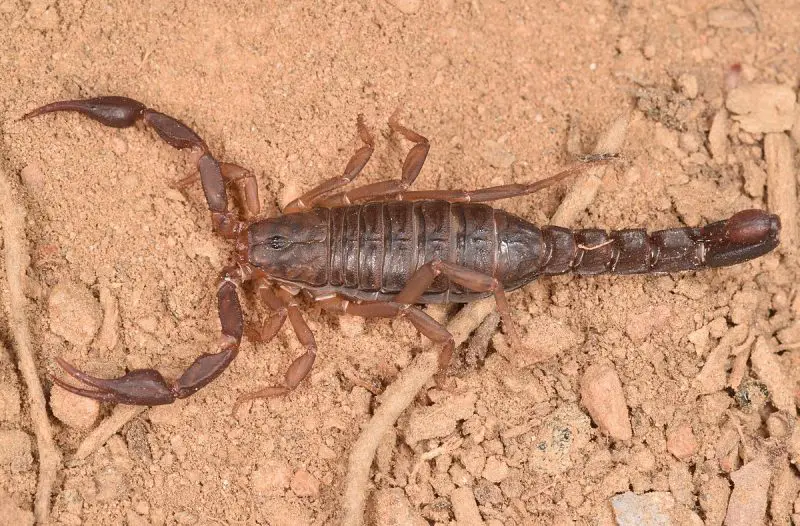
The Southern Devil Scorpion is the only scorpion native to Virginia and the southeastern United States. Adults measure about 25 to 45 millimeters in length, with a dark brown to black body and lighter-colored legs and pincers. Their appearance is intimidating, though they are not as dangerous as tropical scorpions.
These nocturnal predators feed on insects and small arthropods, using their pincers to grasp prey and their stinger to subdue it. They are shy and avoid confrontation with humans, but will sting in self-defense if handled or accidentally pressed against the skin.
They prefer moist, sheltered habitats such as under rocks, logs, or leaf litter. In Virginia, they are often encountered in forested areas, especially in the western and southern regions. Occasionally, they wander into homes searching for shelter.
The sting is usually comparable to that of a bee, causing localized pain, redness, and swelling. Severe systemic effects are rare, but allergic individuals may experience more intense reactions. Despite their fearsome reputation, they are not considered a major medical threat.
Bees, Wasps, Hornets (Apidae, Vespidae families)
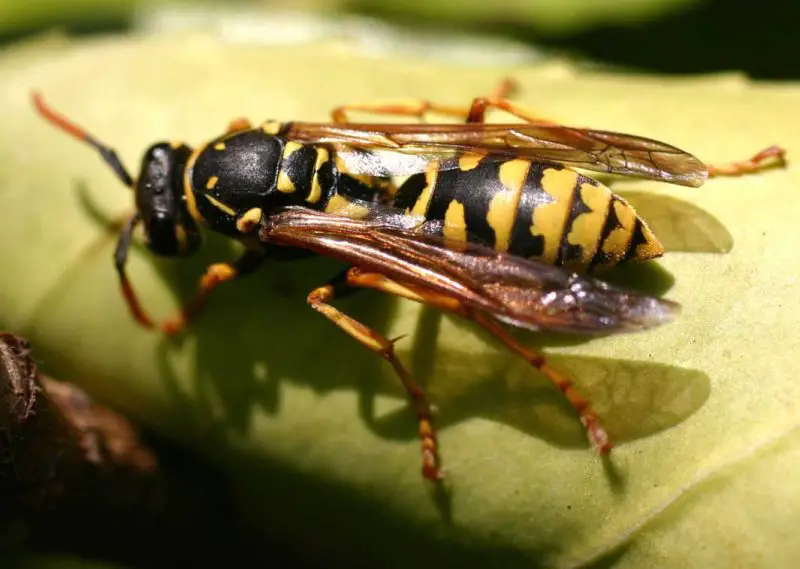
Bees, wasps, and hornets are common flying insects in Virginia, recognizable by their black and yellow coloration, slender bodies, and transparent wings. Sizes range widely: honeybees are about 15 millimeters long, yellow jackets around 12 millimeters, and hornets can reach up to 35 millimeters in length.
Behavior varies among species. Honeybees are generally docile but will defend their hives if threatened. Wasps and hornets are more aggressive, capable of stinging repeatedly since their stingers do not detach. These insects are most active during the warm months, especially late summer and early fall when colonies are largest.
Nesting habits differ as well. Honeybees build wax combs, often maintained by beekeepers. Yellow jackets nest underground or in cavities, while hornets construct large paper-like aerial nests in trees or buildings. All play ecological roles in pollination or pest control but become hazardous when nests are near human activity.
Stings cause immediate sharp pain, redness, and swelling. While most individuals recover quickly, people with insect venom allergies may experience anaphylaxis, a life-threatening reaction requiring emergency medical care. Because of this risk, bees, wasps, and hornets are among the most medically significant insects in Virginia.
Bald-faced Hornet (Dolichovespula maculata)
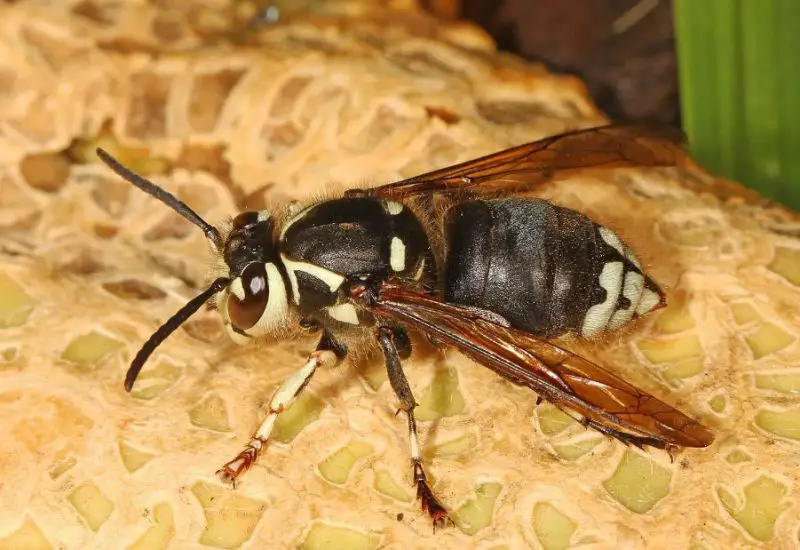
The Bald-faced Hornet is a large black-and-white wasp, easily recognized by its striking white face and markings on the thorax and abdomen. Adults typically measure 12 to 20 millimeters in length, making them noticeably larger than yellow jackets. Despite its common name, it is technically a type of yellow jacket, not a true hornet.
This species is highly aggressive when defending its nest. Unlike honeybees, bald-faced hornets can sting repeatedly, delivering painful stings with venom that causes burning, swelling, and redness. Attacks often come in groups, as multiple workers respond rapidly to perceived threats.
Bald-faced hornets build large paper nests, often hanging in trees, shrubs, or under building eaves. These nests can reach the size of a basketball and contain hundreds of workers by late summer. Colonies die out in winter, with only fertilized queens surviving to establish new nests the following year.
Although they pose risks to humans, bald-faced hornets are also beneficial predators, feeding on flies, caterpillars, and other insects. Their aggressive defense of nests, however, makes them a frequent problem in residential areas where nests are disturbed.
Yellow Jackets (Vespula species)
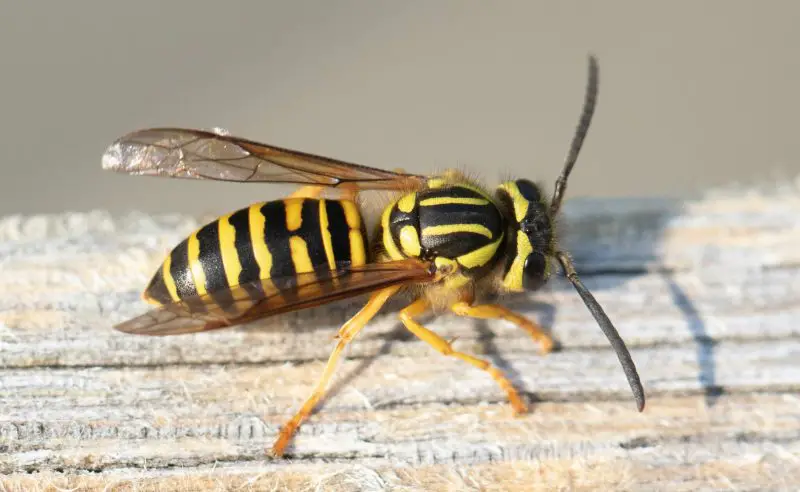
Yellow jackets are among the most familiar stinging insects in Virginia, known for their bright black-and-yellow striped bodies. They are medium-sized, usually 10 to 16 millimeters long, and can easily be mistaken for bees. Unlike bees, however, they have thinner waists and smoother bodies.
These insects are extremely aggressive when defending their nests, often stinging multiple times. Their stings inject venom that causes pain, swelling, and itching, and they will swarm in large numbers when disturbed. Some people experience severe allergic reactions that require immediate medical attention.
Yellow jackets prefer nesting in the ground, hollow logs, wall cavities, or other enclosed spaces. Colonies can contain thousands of individuals, becoming especially troublesome by late summer and fall when worker populations peak. They are attracted to human food, particularly sugary drinks and meats, making outdoor gatherings vulnerable to invasions.
Despite their aggression, yellow jackets are important scavengers and predators of other insects. Their dual role as pest controllers and human hazards makes them one of the most notable insect groups in Virginia.
Blister Beetle (Meloe species)
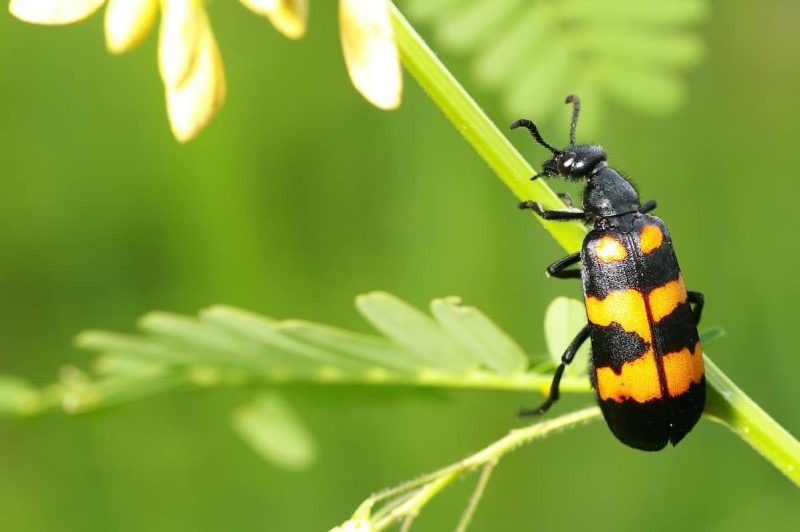
Blister beetles are elongated, soft-bodied beetles that range in color from black to metallic green or striped. Adults typically measure 12 to 25 millimeters long. They are often slender, with flexible wing covers and a narrow thorax that makes them appear somewhat fragile.
The most notable feature of blister beetles is their defensive chemical secretion called cantharidin. When handled or crushed, the beetle releases this substance, which can cause painful skin blisters and irritation. Livestock that consume hay contaminated with blister beetles may suffer from poisoning.
Blister beetles are commonly found in fields, gardens, and meadows, where they feed on flowers and foliage. Some species are also predators in their larval stage, consuming grasshopper eggs and other insect hosts. Their presence is most noticeable in summer and fall.
Although they are not aggressive and do not bite or sting, blister beetles are considered hazardous due to their chemical defense. Handling them with bare hands is strongly discouraged to avoid painful skin reactions.
Velvet Ant / Cow Killer (Dasymutilla occidentalis)
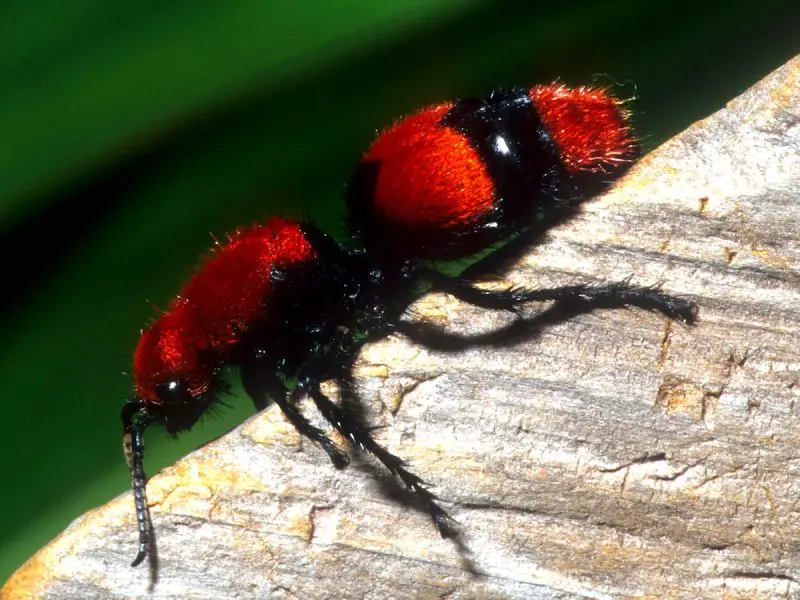
The Velvet Ant, commonly called the Cow Killer, is actually a wingless female wasp rather than a true ant. It is covered in dense, bright red-orange and black hair, giving it a striking appearance. Adults measure 12 to 25 millimeters long and are highly noticeable when moving across the ground.
This insect is solitary and does not form colonies like ants or bees. Females are wingless and roam actively in search of ground-nesting bee or wasp larvae, which they parasitize by laying eggs. Males are winged and less commonly seen.
Velvet ants prefer sandy soils, open fields, and dry habitats. They are often encountered during hot summer days, moving quickly across the ground. Despite their bold colors, they are not aggressive and generally avoid direct contact with humans.
Their sting, however, is notoriously painful and ranks among the most intense of any insect in North America. While not deadly, the sting causes sharp, burning pain that can last for several minutes. This reputation has earned them the nickname “cow killer,” though the sting is not fatal to livestock.
Giant Water Bug (Belostoma species)
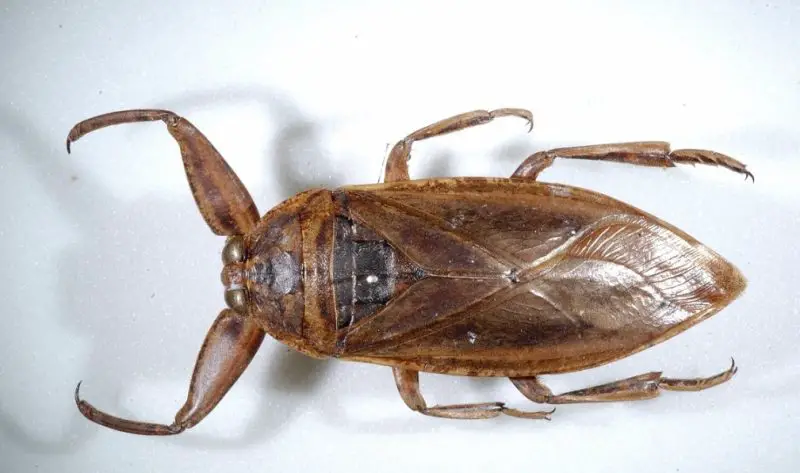
The Giant Water Bug is one of the largest true bugs in Virginia, with adults ranging from 20 to 60 millimeters in length. They have broad, flat bodies, raptorial front legs adapted for grasping prey, and strong, piercing mouthparts. Their dark brown coloration helps them blend into aquatic environments.
These insects are ambush predators that feed on fish, tadpoles, and aquatic invertebrates. They use their front legs to seize prey and inject digestive enzymes through their beak, liquefying tissues for consumption. Although not venomous to humans, their bite is extremely painful and is often compared to a bee sting.
Giant water bugs are found in ponds, streams, and wetlands, where they rest motionless on vegetation or the bottom until prey passes by. They are strong fliers and are sometimes attracted to lights at night, earning them the nickname “toe-biters.”
Although their bite poses little long-term danger, it can cause intense pain, swelling, and numbness in the affected area. Their unusual habits and size make them a memorable insect for anyone who encounters them in Virginia’s waters.
Saddleback Caterpillar (Acharia stimulea)
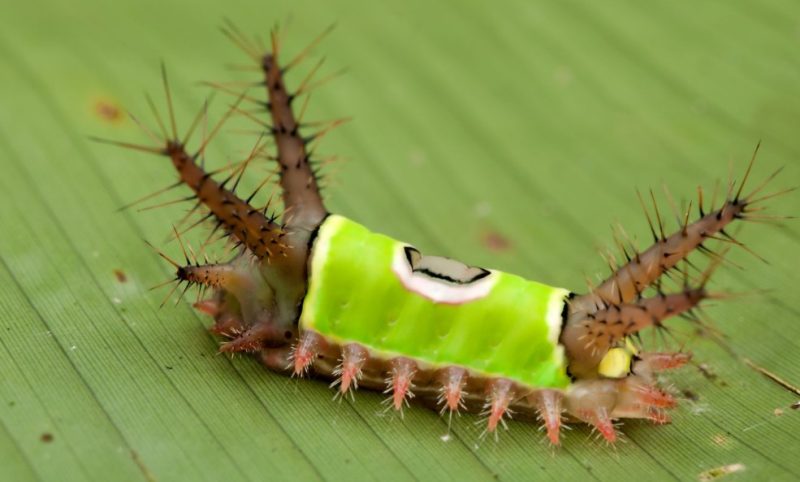
The Saddleback Caterpillar is a small but striking larva easily recognized by its vivid green “saddle” marking, bordered with brown and featuring a central white dot. This unusual appearance serves as a warning to predators. Adults measure around 20 to 25 millimeters in length, and the caterpillar stage is the most hazardous.
Its body is covered in short, venomous spines that break off upon contact with skin. These spines inject toxins that cause immediate burning pain, redness, and swelling. In some cases, symptoms include nausea, headaches, or rashes that can last for hours to days.
This species feeds on a wide range of plants, including ornamental shrubs, fruit trees, and crops. It is most often found in gardens, orchards, and wooded areas during summer and early fall when caterpillars are fully grown.
Although the adult moth is harmless, the caterpillar is considered one of the most venomous in North America. Handling it should always be avoided, and protective gloves are recommended when gardening in infested areas.
Chiggers (Trombiculidae family)
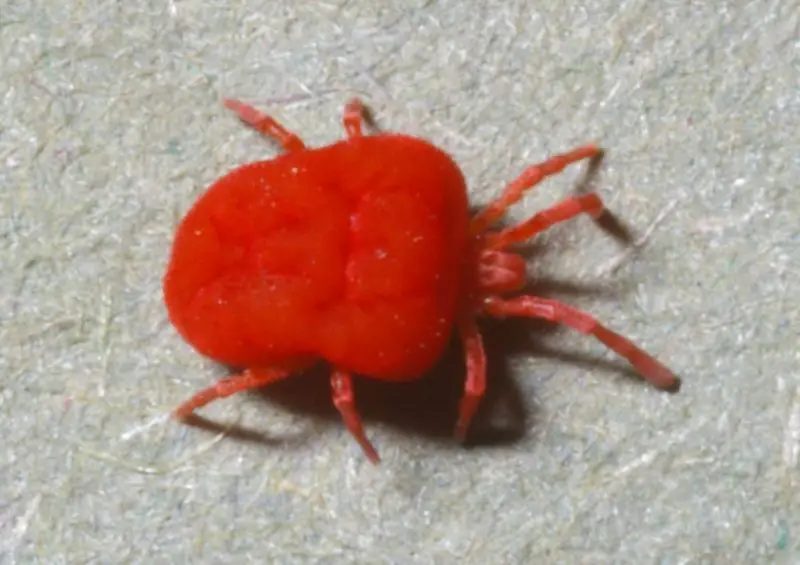
Chiggers are tiny red mites, barely visible to the naked eye, measuring less than 0.5 millimeters in length. Despite their small size, they are notorious for the irritation caused by their bites. Adults are harmless, but the larval stage is parasitic on humans and animals.
Chigger larvae attach to skin and inject digestive enzymes that break down tissue. They do not burrow under the skin, but their feeding causes intense itching, redness, and welts that can last for several days. Scratching may lead to secondary infections.
These mites prefer grassy fields, forest edges, and moist areas with dense vegetation. They are most active in warm, humid months, particularly late spring through early fall in Virginia. Humans typically encounter them when walking through tall grass or sitting on the ground.
Though chigger bites are irritating, they do not transmit diseases in the United States. However, their ability to cause widespread discomfort makes them a persistent nuisance in outdoor environments.
Cockroaches (Blattodea order)
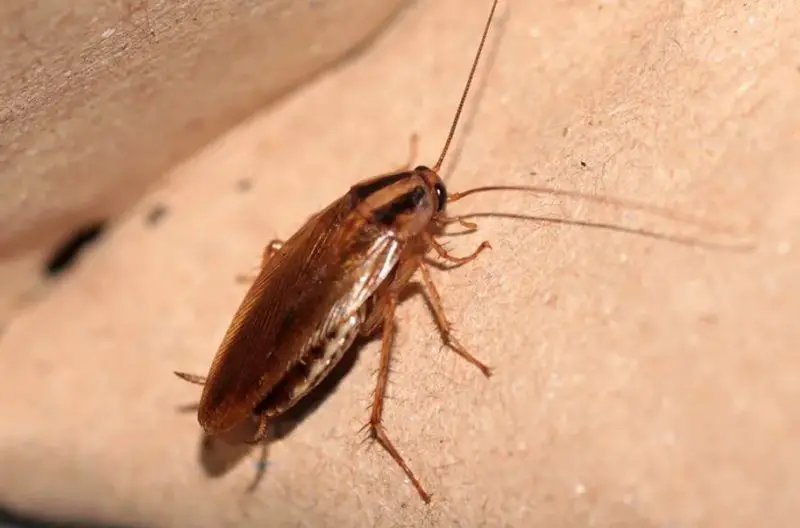
Cockroaches are among the most resilient and widespread pests, with several species common in Virginia, including the German Cockroach (Blattella germanica) and the American Cockroach (Periplaneta americana). Adults range from 12 to over 50 millimeters in length, with flattened, oval bodies, long antennae, and fast, darting movements.
These insects thrive in human environments, particularly warm, moist, and dark areas such as kitchens, bathrooms, basements, and sewers. Nocturnal by nature, they emerge at night to feed on almost anything, from food scraps to paper and glue.
Cockroaches are not directly venomous, but they are major carriers of pathogens including Salmonella, E. coli, and other bacteria that contaminate food and surfaces. Their droppings, saliva, and shed skins contain allergens that can trigger asthma and severe allergic reactions, especially in children.
Infestations are difficult to control due to their rapid reproduction and ability to hide in small crevices. Their medical and sanitary risks make them one of the most dangerous household pests.
Centipedes (Chilopoda class)
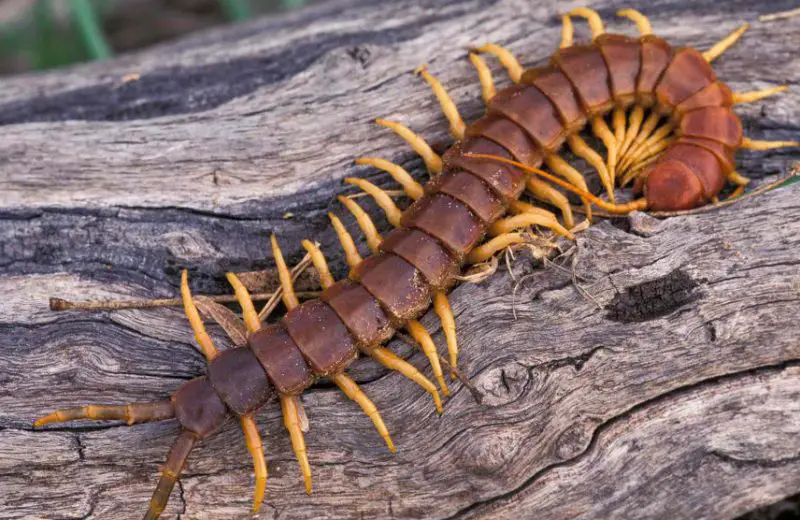
Centipedes are elongated arthropods with flattened bodies and numerous legs—one pair per body segment. In Virginia, common species such as the House Centipede (Scutigera coleoptrata) reach 25 to 50 millimeters in length, while some soil-dwelling species grow larger. Their appearance is often alarming due to their speed and many legs.
They are predatory, feeding on insects, spiders, and other small arthropods. Centipedes use modified front legs called forcipules to inject venom into their prey, immobilizing it before consumption. They are nocturnal and usually found in damp areas like basements, bathrooms, under rocks, or in leaf litter.
When threatened, centipedes may bite humans, delivering venom through their forcipules. Although bites are rare and not usually life-threatening, they can cause sharp pain, redness, swelling, and localized irritation lasting several hours.
Despite their unsettling presence, centipedes play an important ecological role as natural pest controllers. However, handling them directly should be avoided to prevent painful bites.
Millipedes (Diplopoda class)
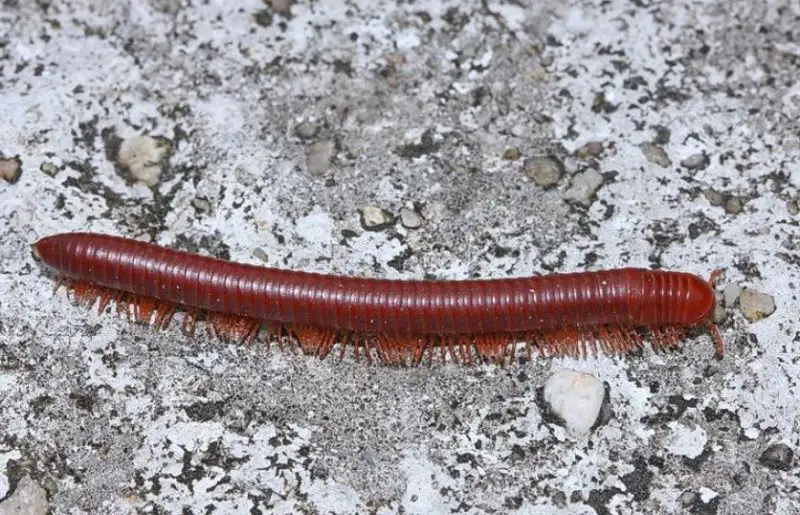
Millipedes are cylindrical arthropods with rounded bodies and two pairs of legs per body segment. They range widely in size, from just a few millimeters to over 100 millimeters in length, depending on the species. Their slow, curling movements distinguish them from centipedes.
Unlike predatory centipedes, millipedes are detritivores, feeding on decaying organic matter such as leaf litter and rotting wood. They play an important role in nutrient recycling within forest ecosystems.
Millipedes do not bite or sting, but they defend themselves by secreting irritating chemicals, including hydrogen cyanide compounds in some species. Contact with these secretions can cause skin discoloration, burning, or blistering, and accidental exposure to the eyes may lead to pain and temporary blindness.
They are most commonly found in moist environments, such as under logs, stones, and leaf litter, and occasionally enter homes during wet weather. While not medically dangerous, their secretions make them unpleasant and potentially harmful when handled.
Stink Bugs (Halyomorpha halys and others)
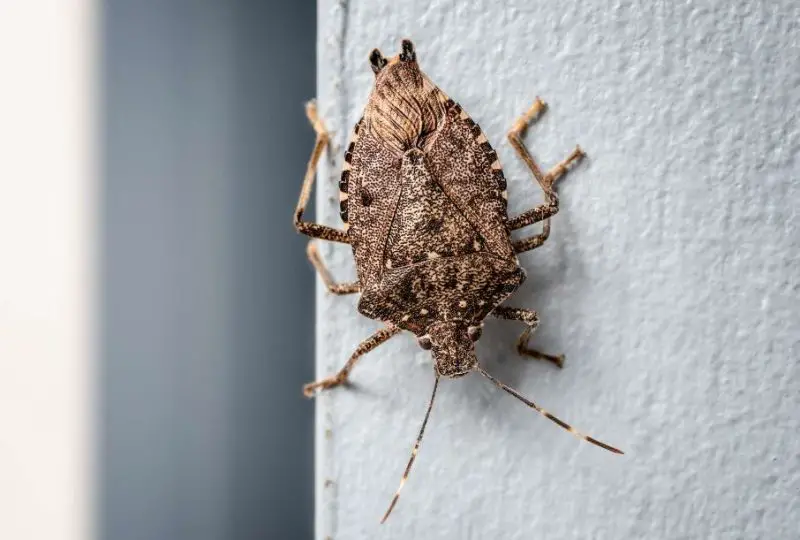
Stink bugs are shield-shaped insects about 12 to 17 millimeters long, with mottled brown or green coloration depending on the species. The invasive Brown Marmorated Stink Bug (Halyomorpha halys), first introduced from Asia, is the most widespread in Virginia. It has distinctive white bands on its antennae and legs.
These insects feed on a wide range of plants, piercing fruits, vegetables, and ornamental plants with their mouthparts. Damage appears as small, sunken spots on fruit and shriveled areas on leaves. They are especially problematic for apples, peaches, corn, and soybeans.
Stink bugs are notorious for invading homes in large numbers during autumn as they seek shelter for overwintering. While they do not bite, sting, or spread disease, their presence indoors can be overwhelming. Crushing them releases a foul-smelling odor, which is their primary defense mechanism.
Because they reproduce quickly and feed on valuable crops, stink bugs are considered both an agricultural pest and a household nuisance. Control is challenging, as pesticides are often ineffective once they have moved indoors.
Japanese Beetles (Popillia japonica)
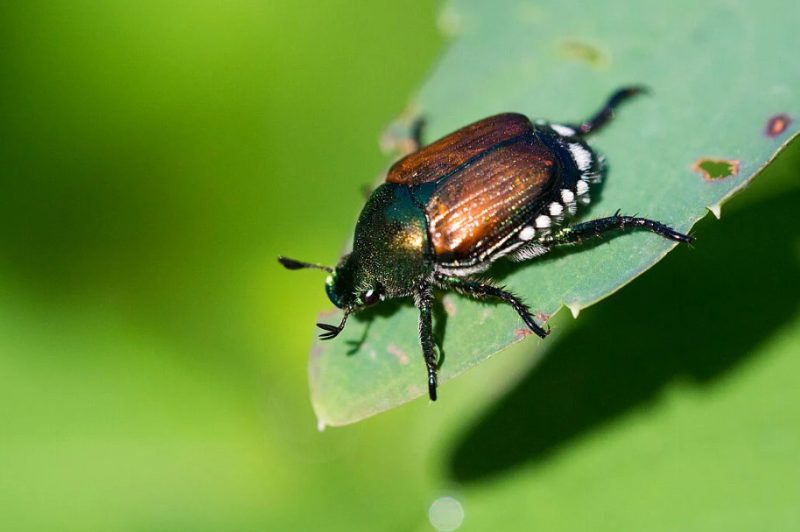
The Japanese Beetle is a metallic green insect with copper-colored wing covers and small white tufts of hair along the sides of its abdomen. Adults measure about 8 to 11 millimeters in length and are highly recognizable due to their shimmering appearance.
This species is a major pest of gardens and agriculture, feeding on over 300 plant species. Adults skeletonize leaves by eating the tissue between veins, leaving only a lace-like framework. They are particularly destructive to roses, grapes, fruit trees, and turfgrass.
The larvae, known as white grubs, live in soil and feed on grass roots, causing brown patches in lawns and weakening turf. Infestations can devastate both ornamental landscapes and commercial crops if uncontrolled.
Although they do not pose direct health risks to humans, their sheer numbers and destructive feeding habits make them one of the most economically damaging beetles in Virginia.
Boxelder Bugs (Boisea trivittata)
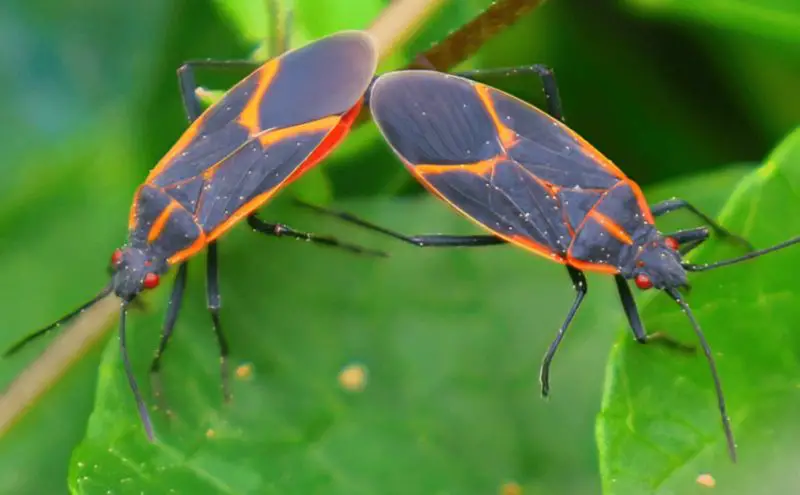
Boxelder Bugs are black insects with bright red or orange markings along their thorax and wings. Adults measure about 12 to 14 millimeters in length, and their slender bodies and colorful patterns make them easy to recognize.
These insects feed primarily on the seeds, leaves, and stems of boxelder trees, though they may also use maple and ash trees as hosts. They cause little long-term damage to trees, making them more of a nuisance than a threat to vegetation.
In the fall, large numbers of boxelder bugs often invade homes and buildings as they search for overwintering sites. Indoors, they do not reproduce or cause structural damage, but their presence in large swarms can be overwhelming.
While generally harmless, boxelder bugs may bite if handled roughly, causing mild irritation or redness. They are best considered a nuisance pest rather than a serious danger.
Carpenter Bees (Xylocopa species)
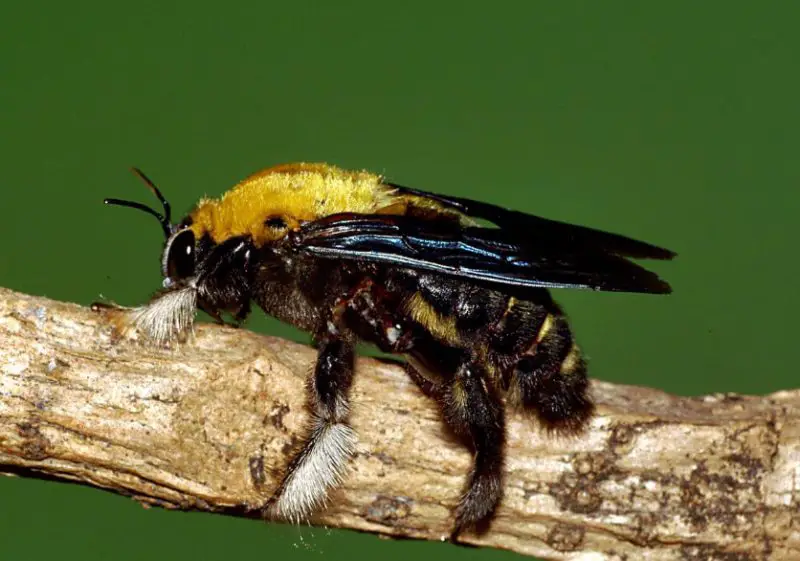
Carpenter Bees are large, robust insects that resemble bumblebees but have shiny, hairless abdomens. Adults typically measure 12 to 25 millimeters long and have black-and-yellow coloration. They are strong fliers, often hovering near wooden structures.
Unlike social bees, carpenter bees are solitary. Females bore into untreated or weathered wood to create tunnels where they lay eggs. Over time, repeated nesting can weaken wooden beams, siding, and outdoor furniture, leading to structural damage.
Males are territorial and often confront people by hovering aggressively nearby, though they are harmless since they lack stingers. Females possess a sting but are generally docile and only sting if directly handled or threatened.
Despite being considered pests for their wood-boring habits, carpenter bees are also important pollinators. Balancing their ecological role with the need to protect buildings makes them a species of both benefit and concern in Virginia.
FAQs about Dangerous or Harmful Bugs in Virginia
Are stink bugs in Virginia dangerous?
No. Stink bugs, especially the Brown Marmorated Stink Bug, are more of a nuisance than a threat. They do not bite or sting but emit a foul odor when disturbed and can invade homes in large numbers.
Which bugs in Virginia carry diseases?
Ticks and mosquitoes are the primary disease carriers. Blacklegged ticks spread Lyme disease, while Lone Star ticks can transmit ehrlichiosis and trigger red meat allergies. Mosquitoes like the Asian Tiger Mosquito and Northern House Mosquito may spread West Nile virus, Zika, and other illnesses.
Can Virginia spiders be life-threatening?
Yes, but rarely. The Black Widow and Brown Recluse are the two venomous spiders of medical concern. Their bites can cause serious reactions, though fatalities are extremely rare with prompt medical treatment.
Are cockroaches in Virginia dangerous to health?
Yes. While they don’t bite, cockroaches spread bacteria such as Salmonella and E. coli, contaminate food, and trigger asthma and allergies through their droppings and shed skins.
What insect has the most painful sting in Virginia?
The Velvet Ant, also called the Cow Killer, is known for delivering one of the most painful stings in North America. Although extremely painful, the sting is not deadly.
Are scorpions found in Virginia?
Yes, the Southern Devil Scorpion lives in southwestern parts of Virginia. Its sting is painful but not life-threatening, usually causing localized swelling and irritation.
Which bugs are the biggest nuisance indoors?
Cockroaches, stink bugs, boxelder bugs, and carpenter bees are frequent household pests. While not always medically dangerous, their presence can be highly disruptive.
How can I protect myself from harmful bugs in Virginia?
Wearing protective clothing outdoors, using insect repellent, sealing entry points in homes, reducing standing water, and keeping firewood or clutter away from buildings are effective strategies to reduce encounters with harmful insects and spiders.

